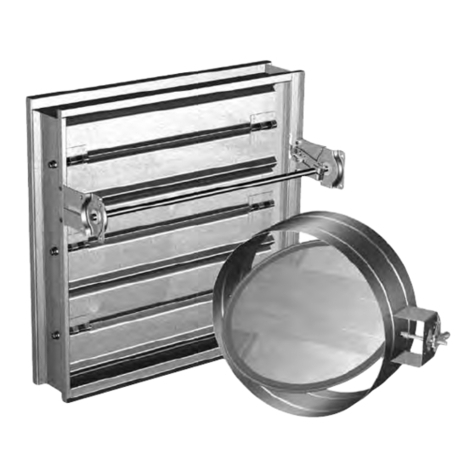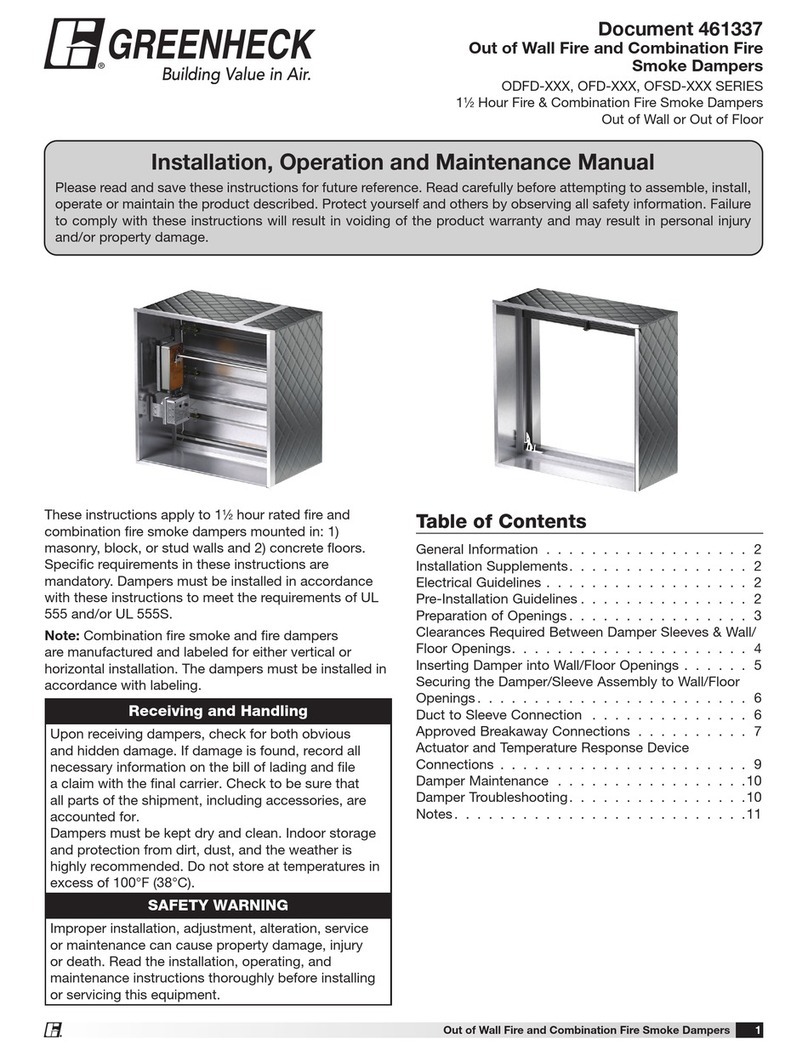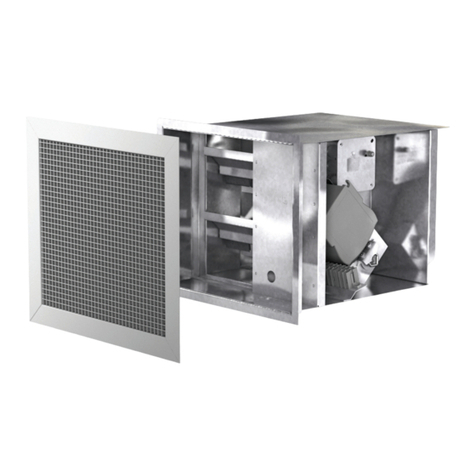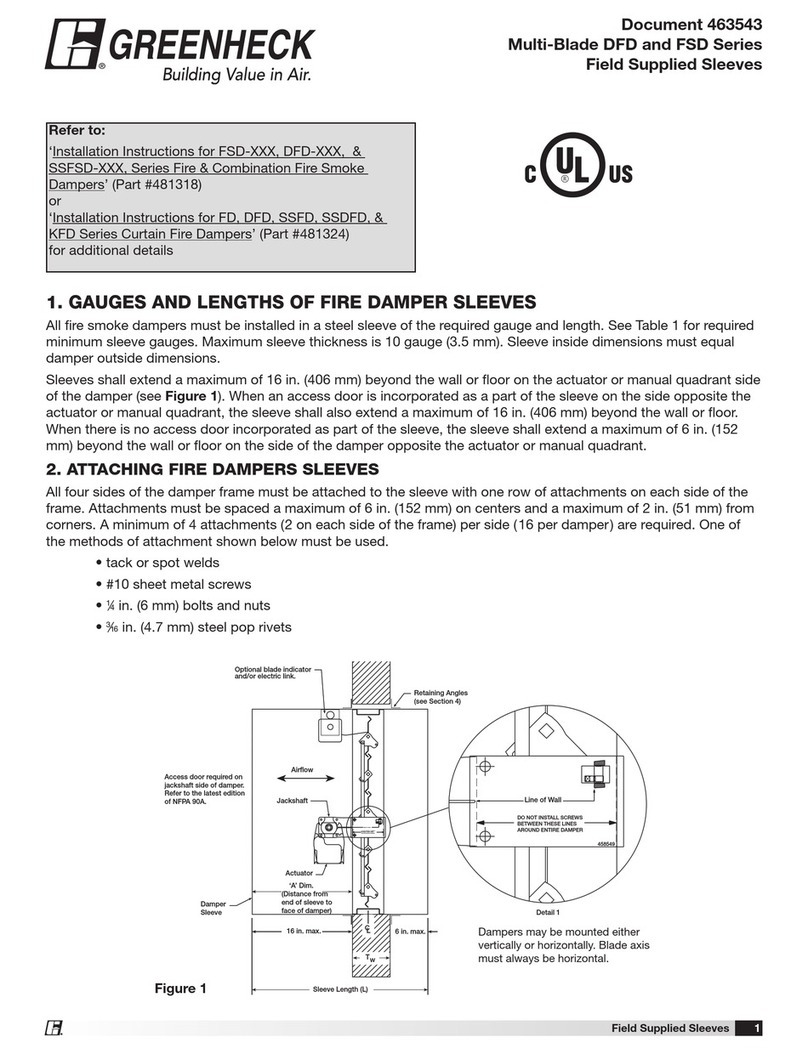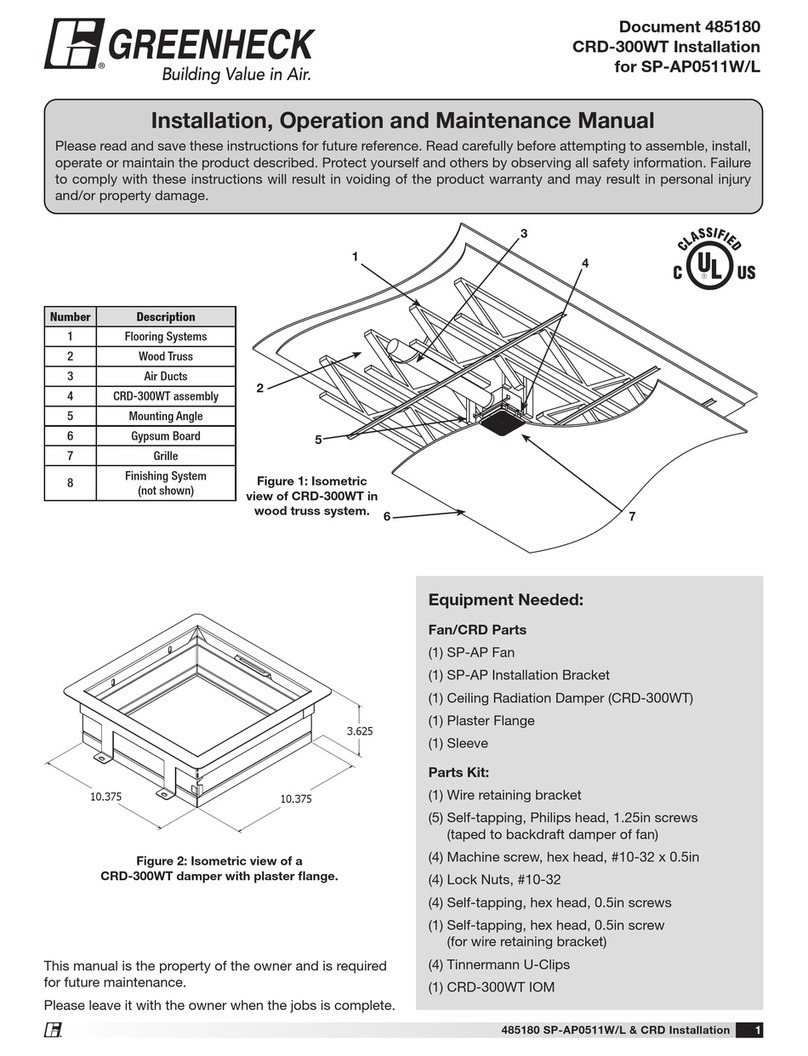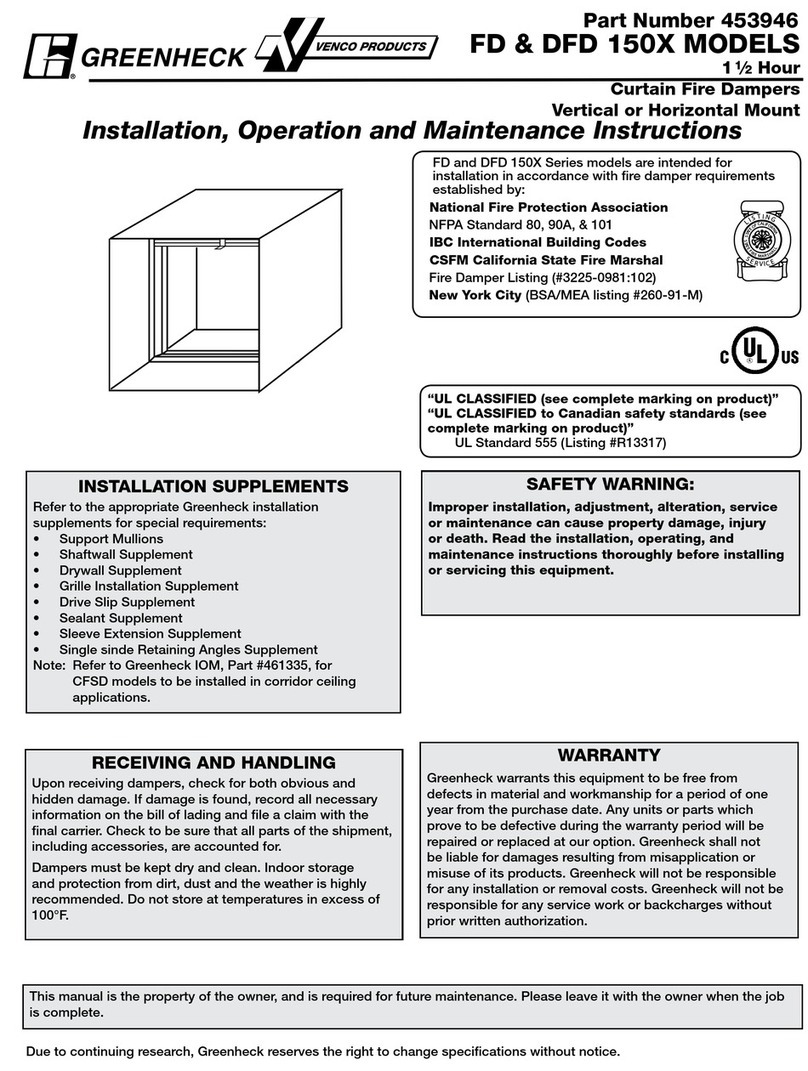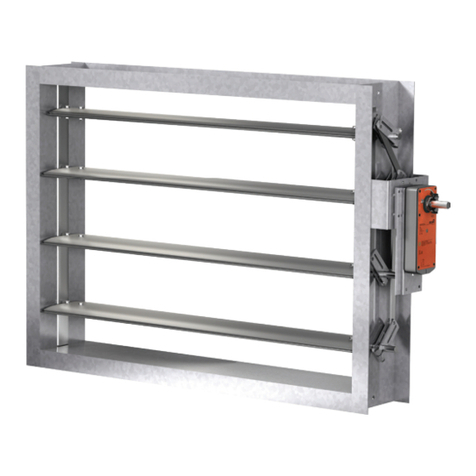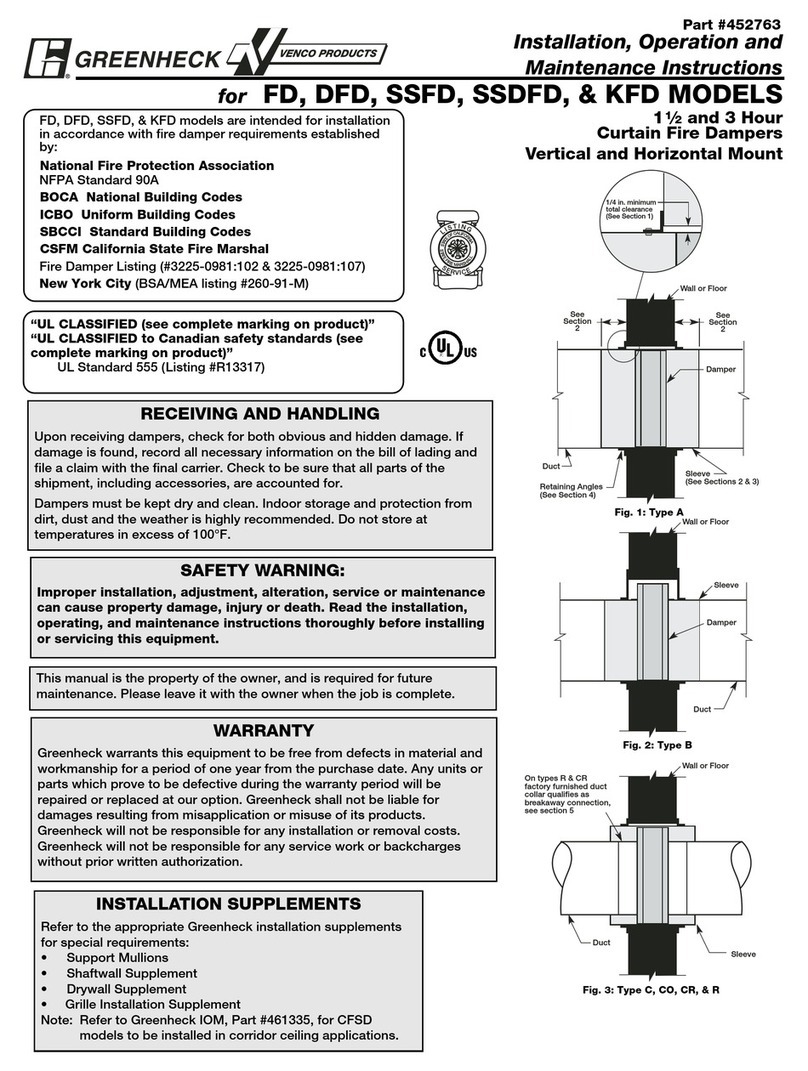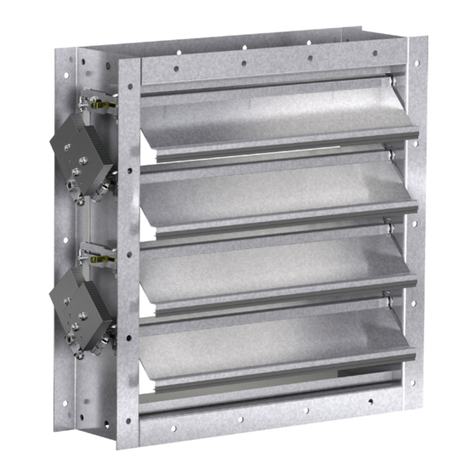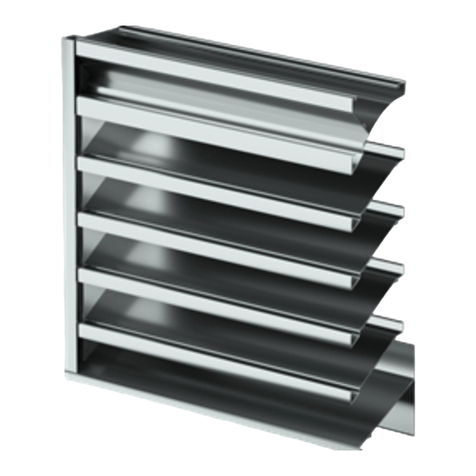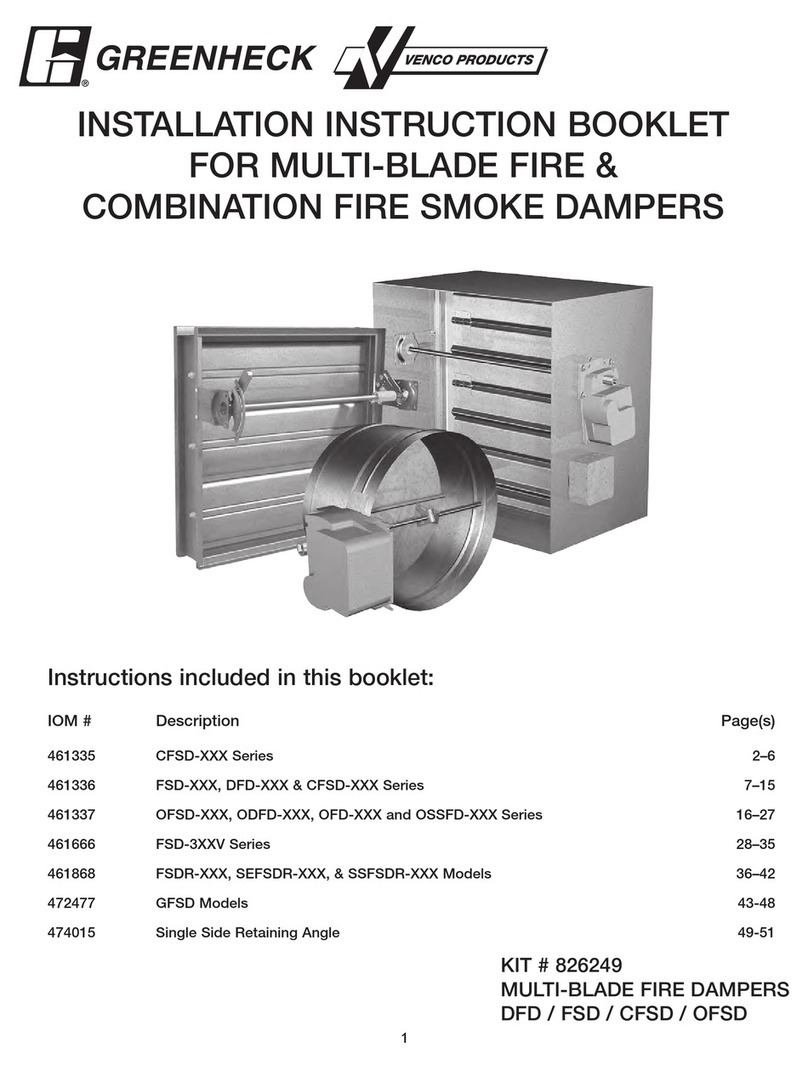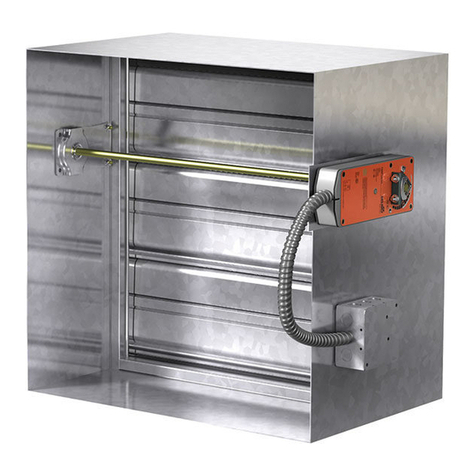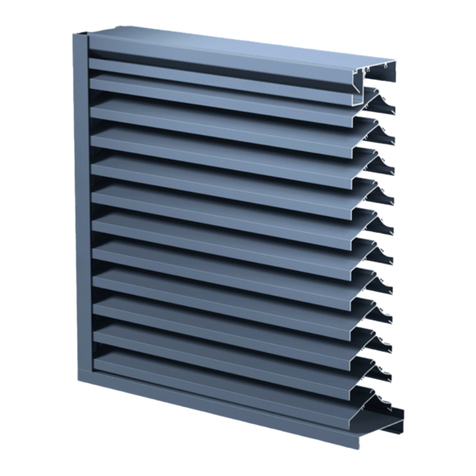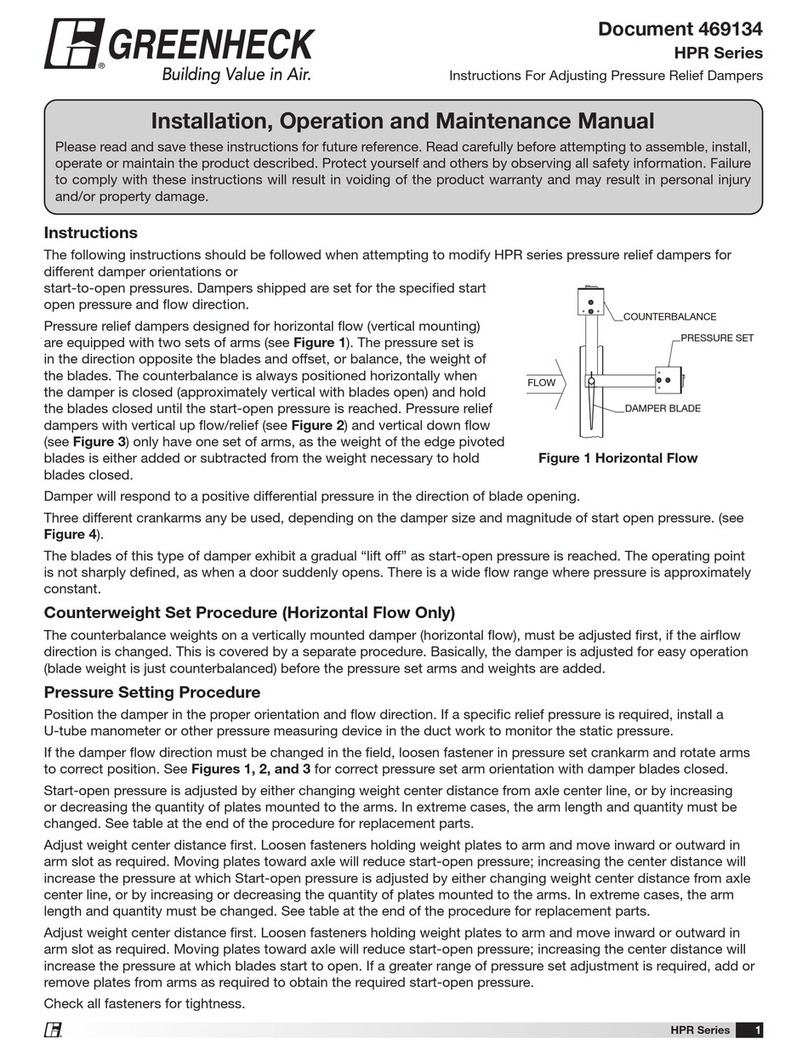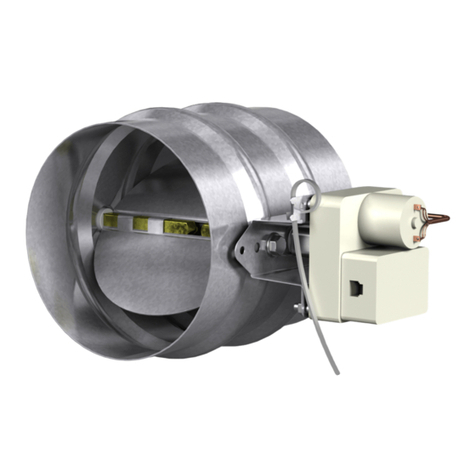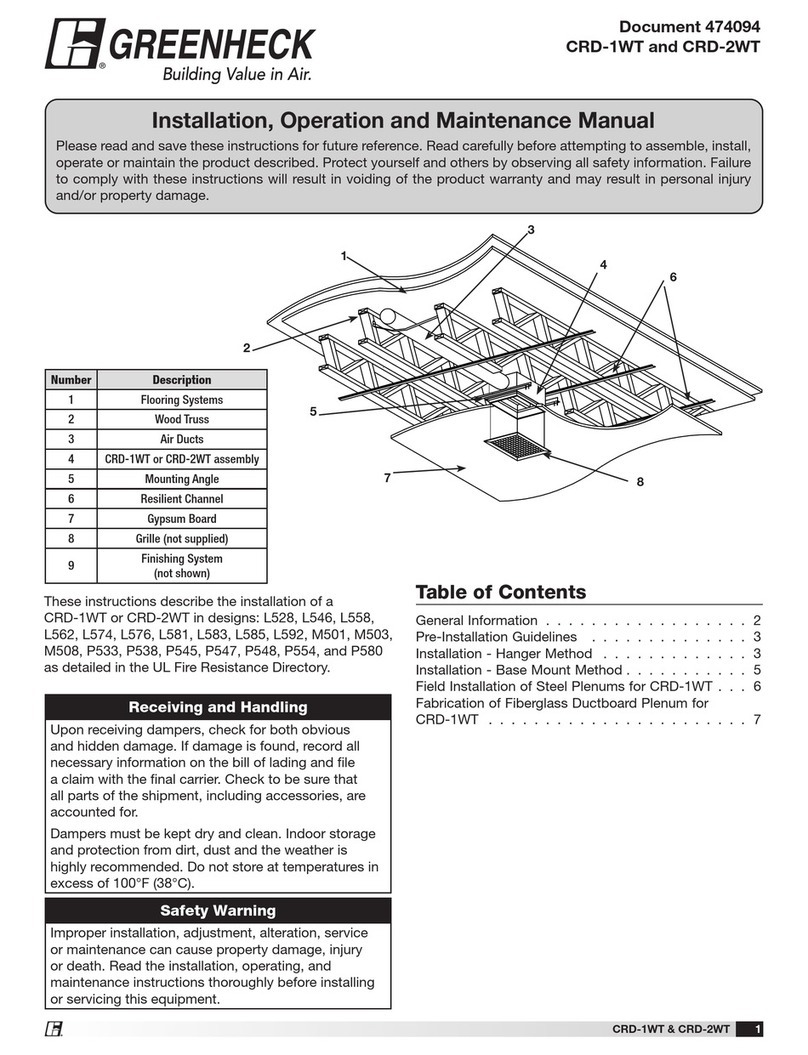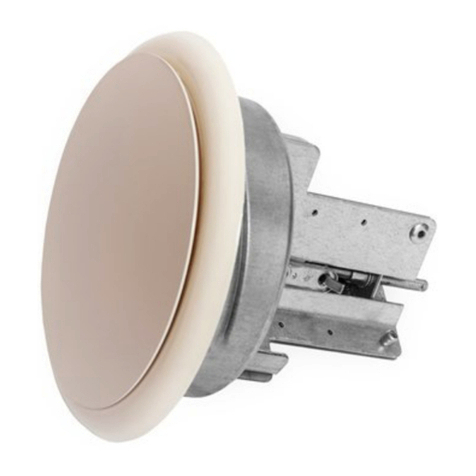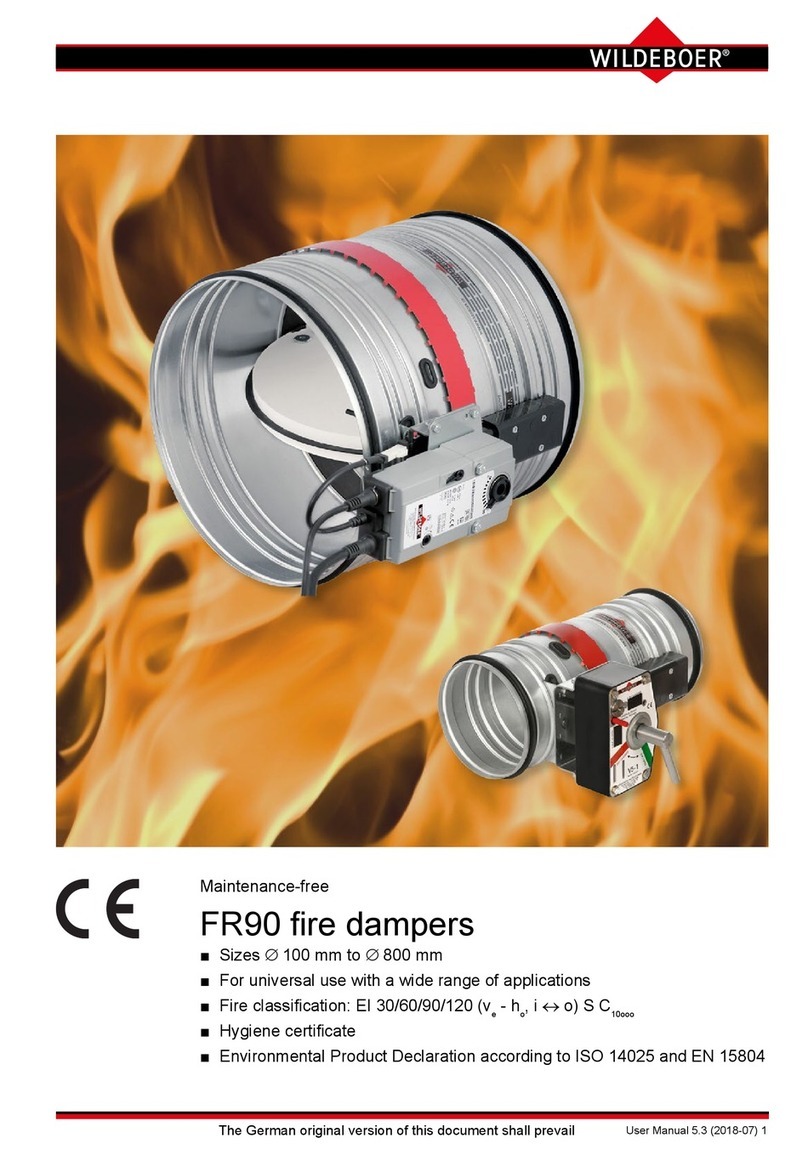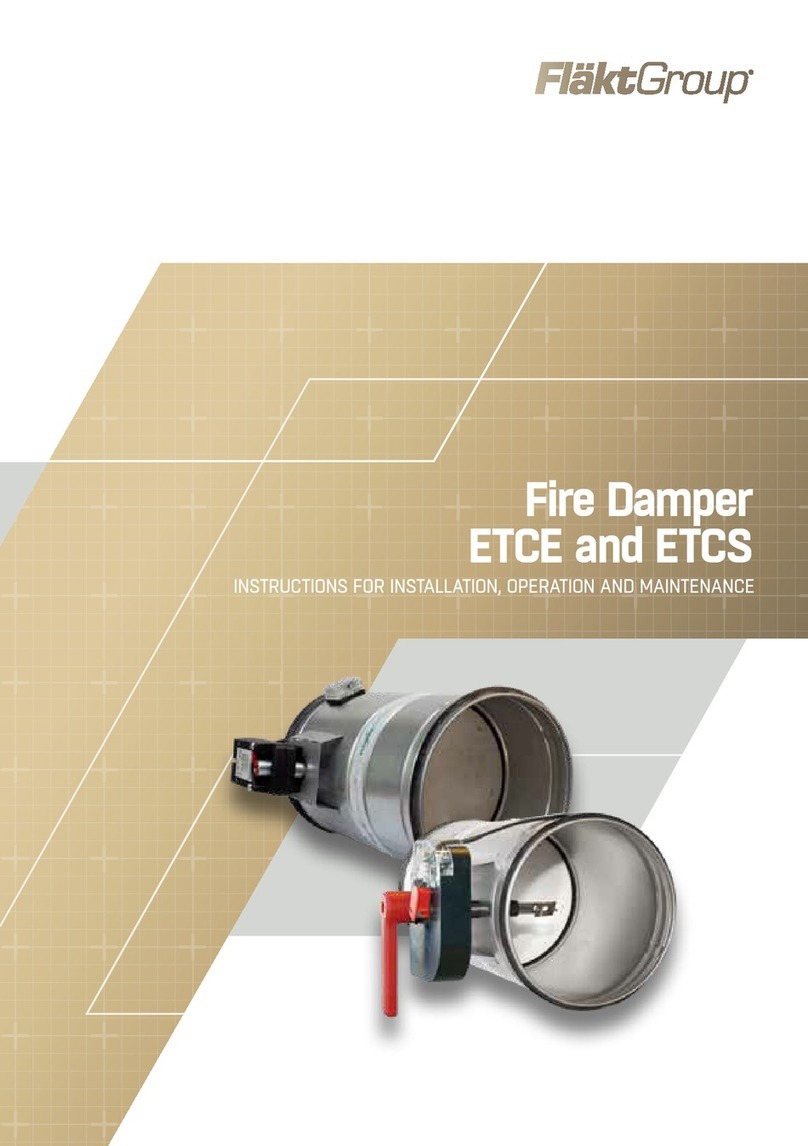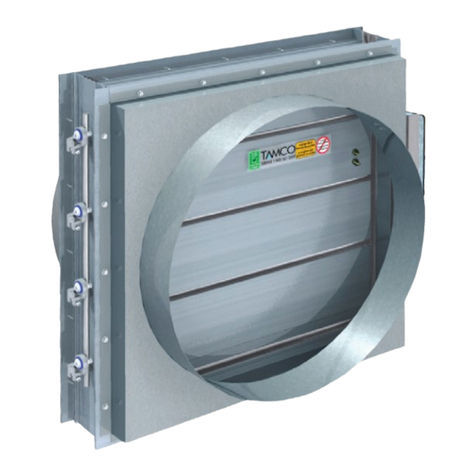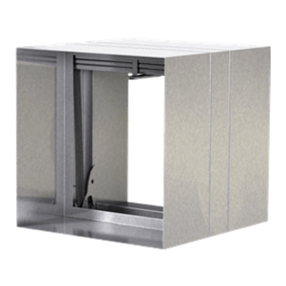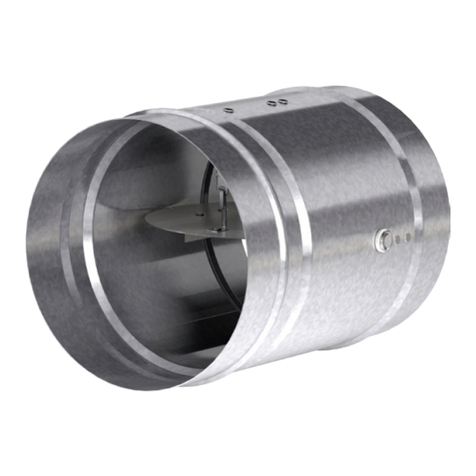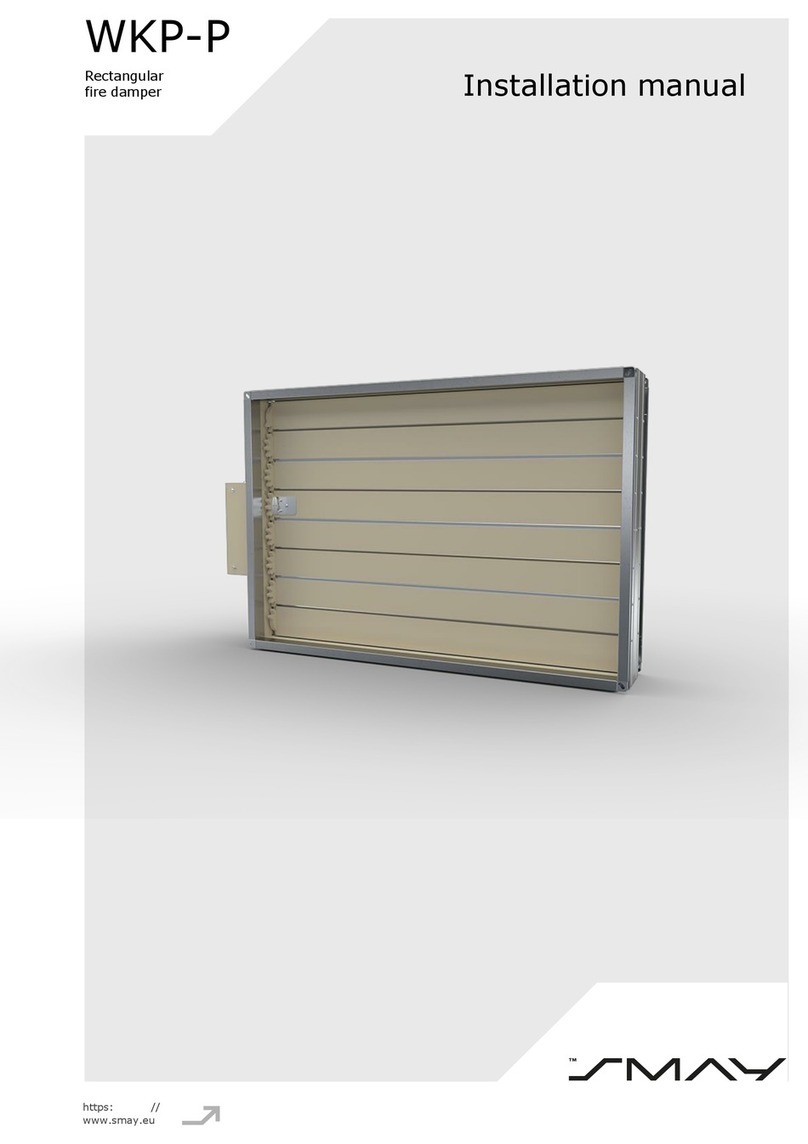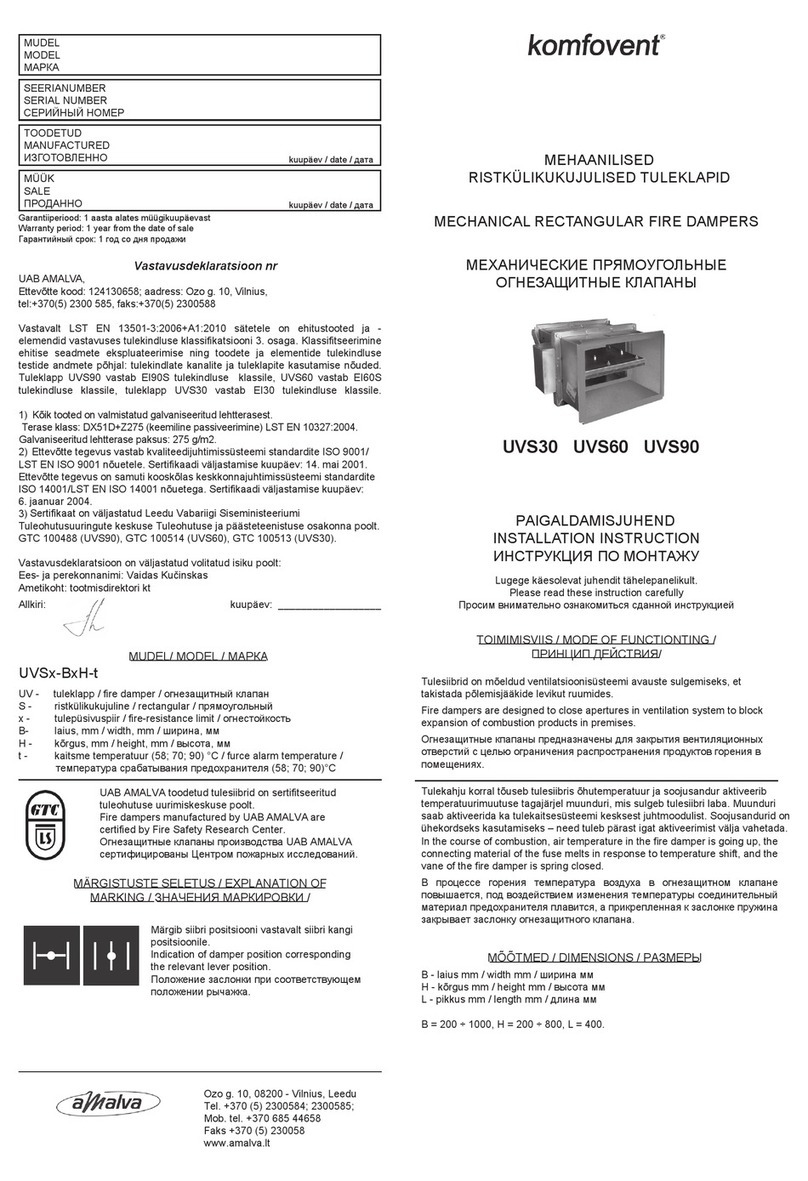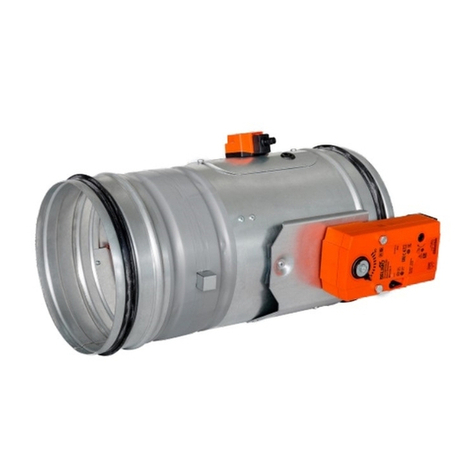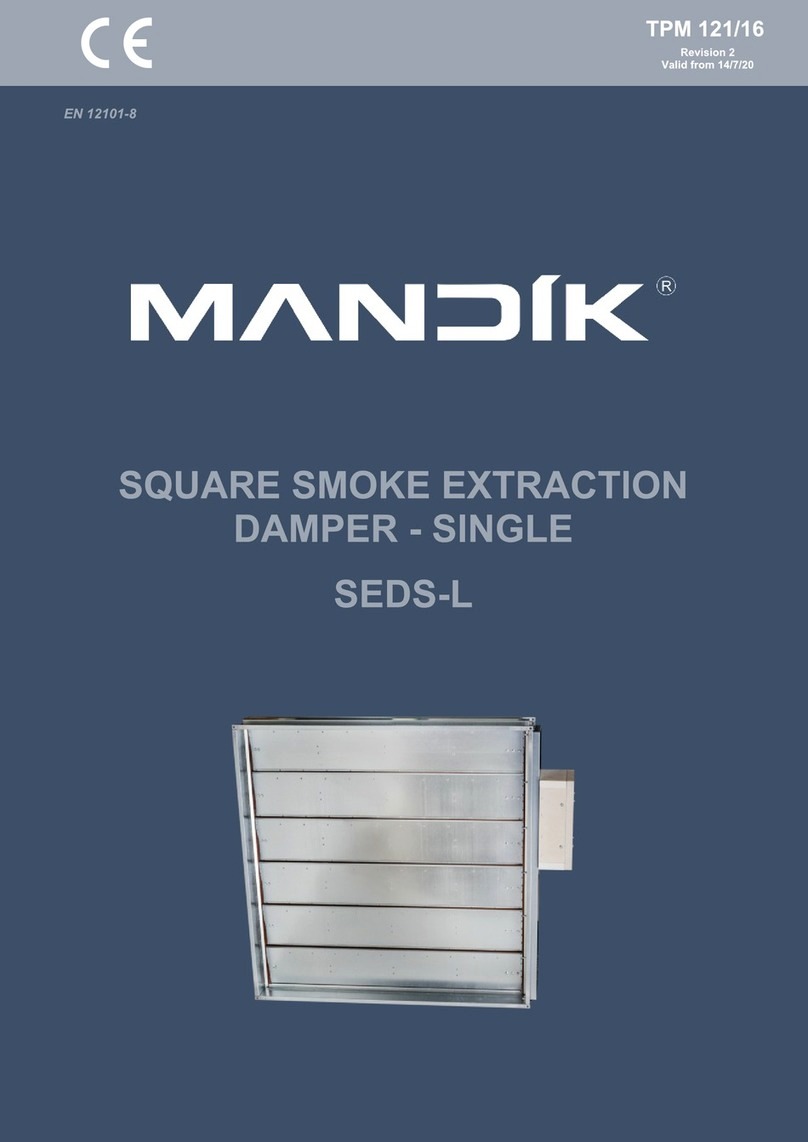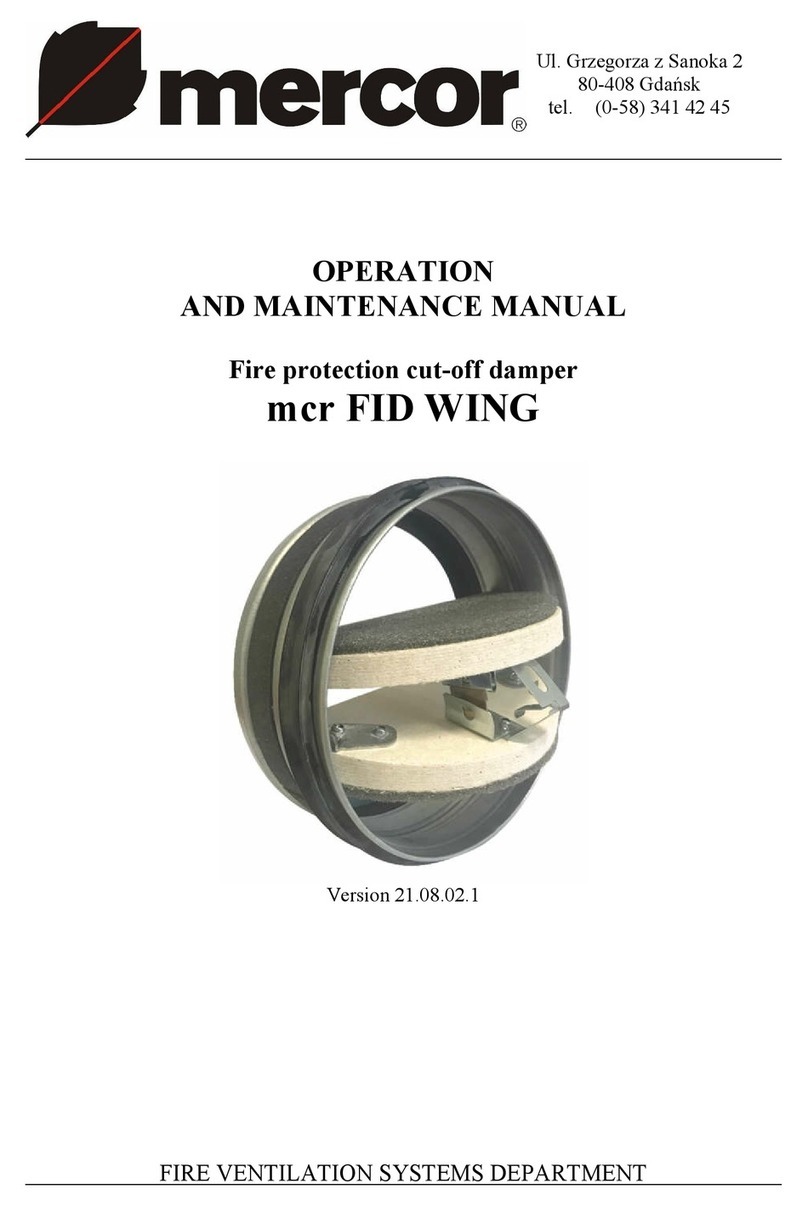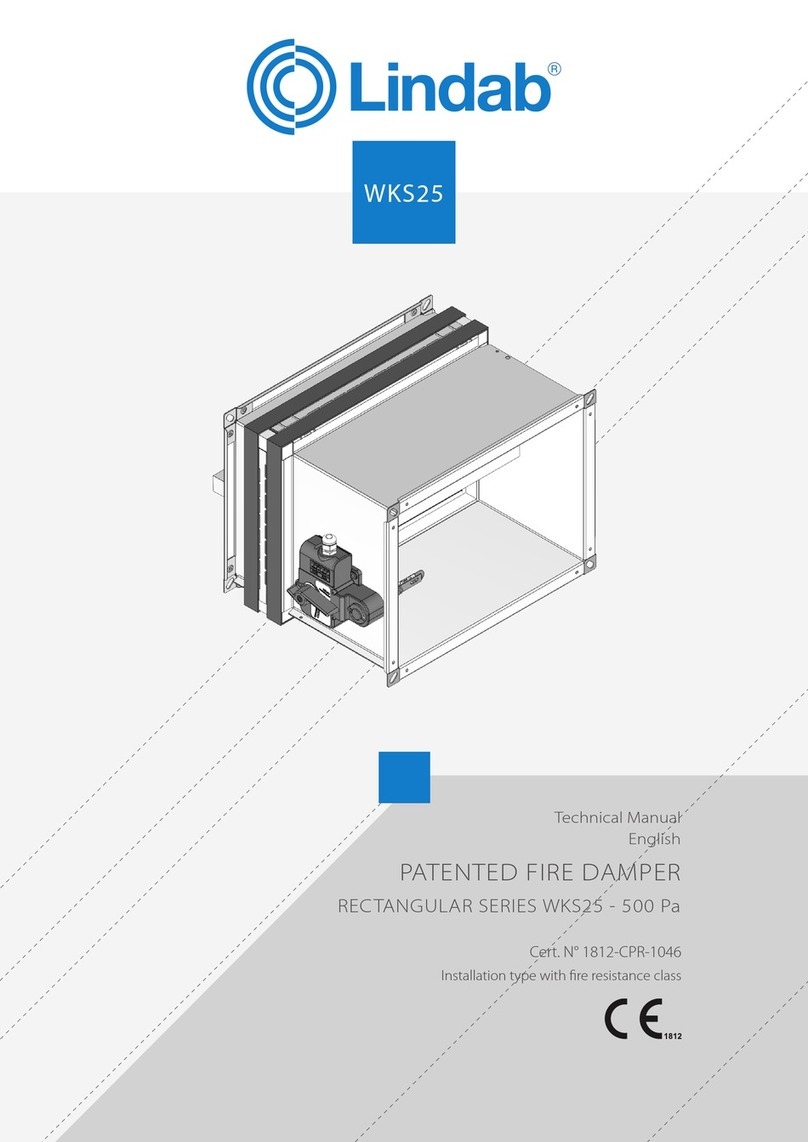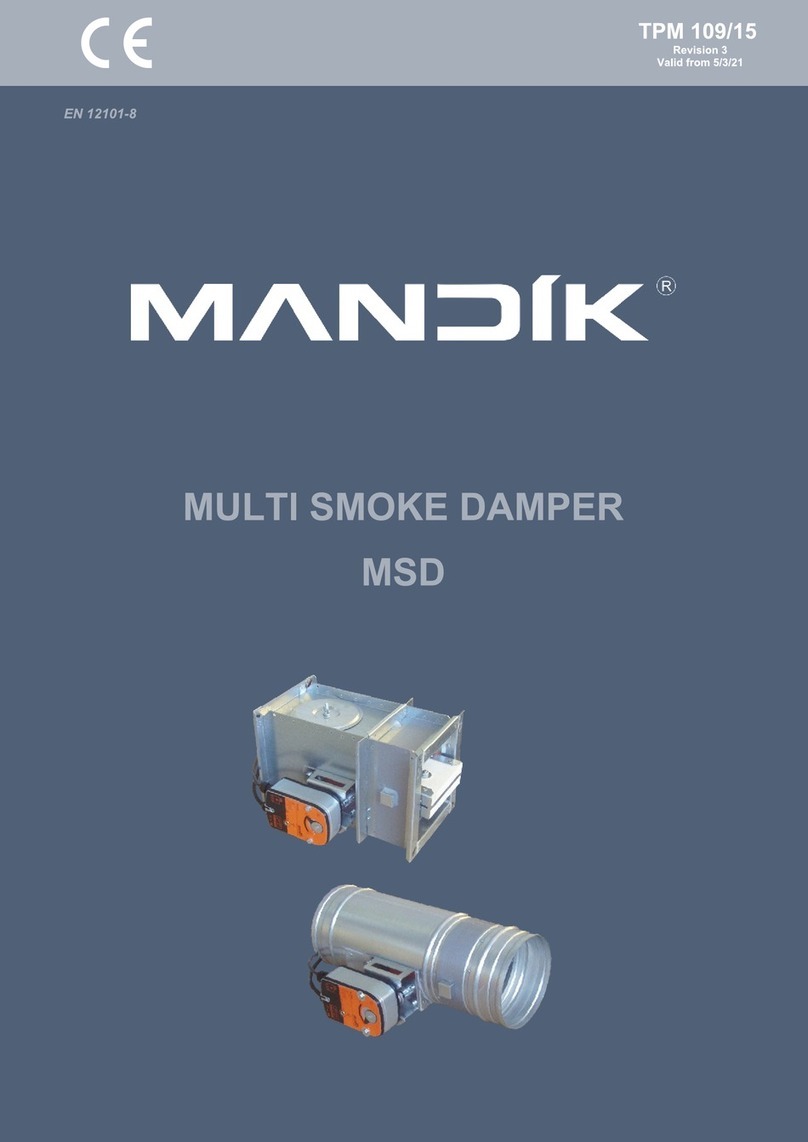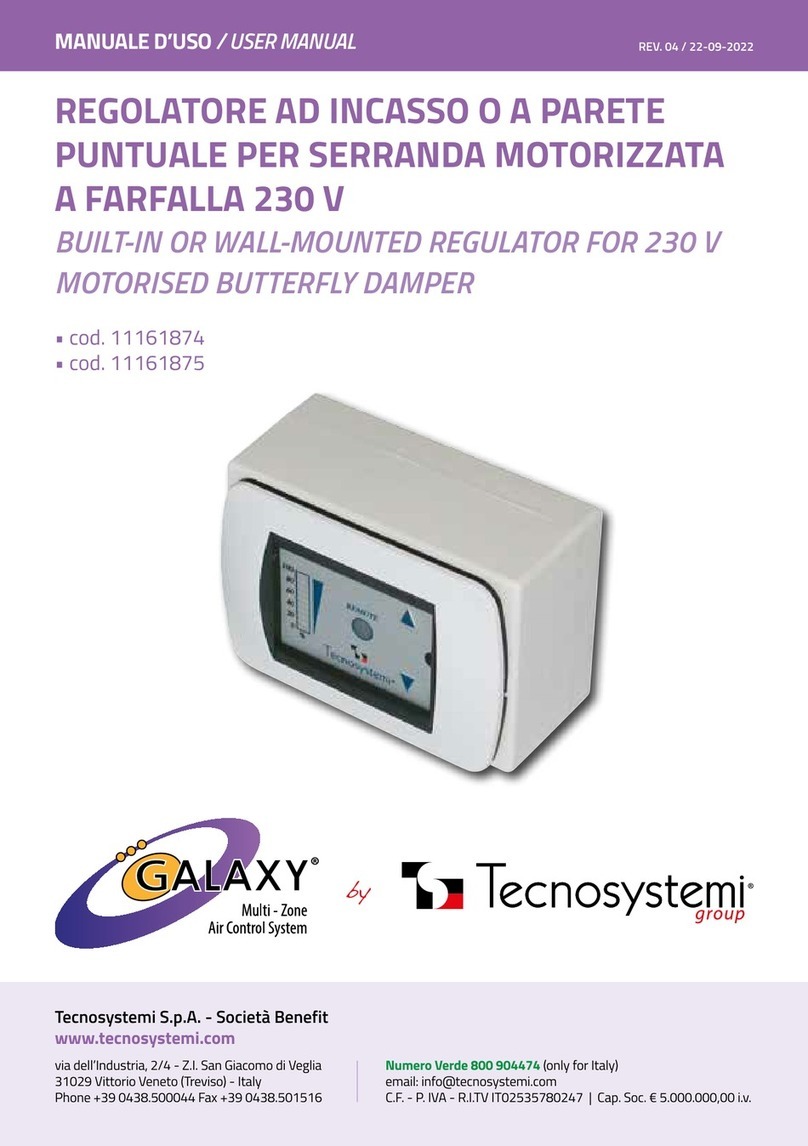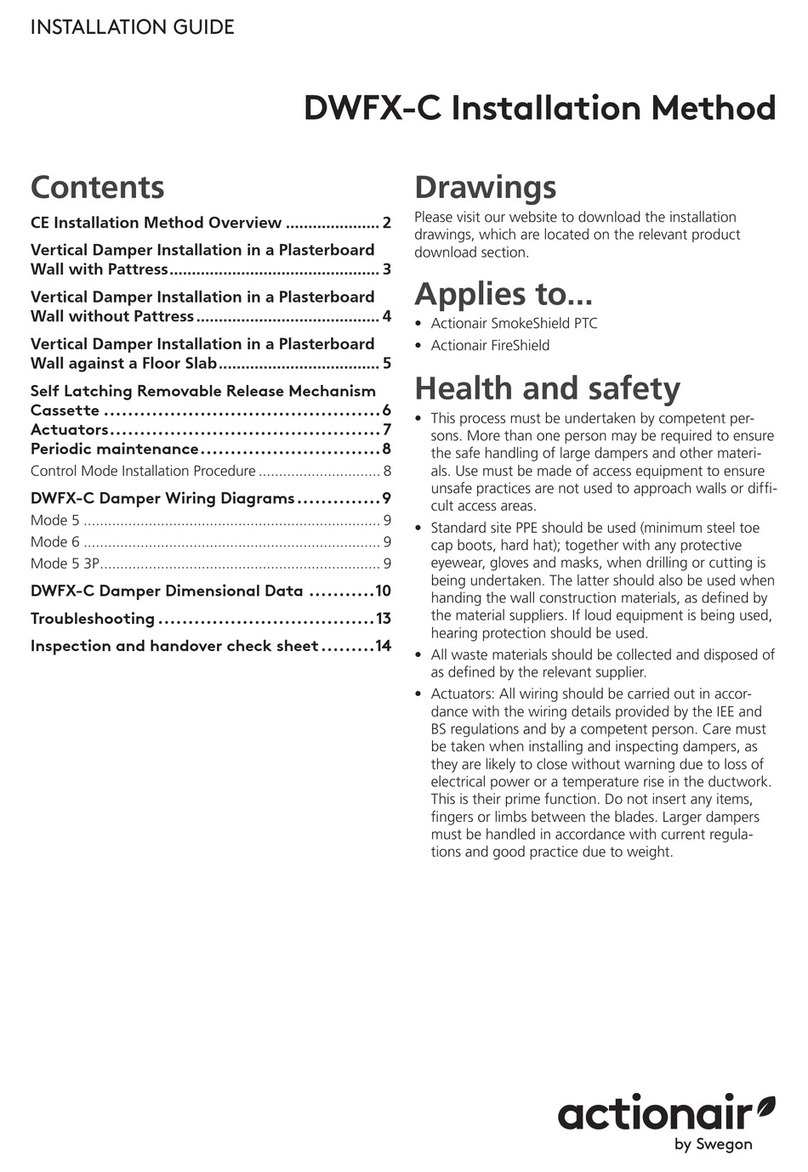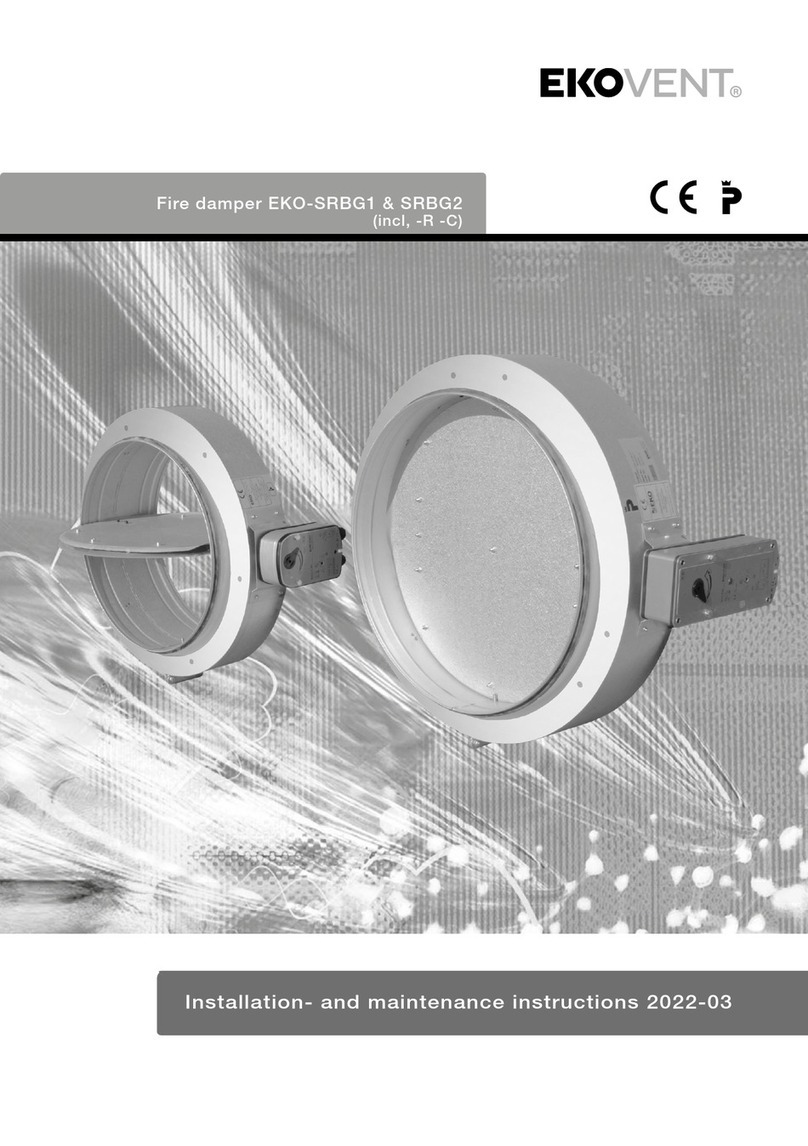
HTD Series 3
Damper Maintenance
Greenheck's dampers are designed to be trouble free and hassle free under normal operation. Dampers are to be
installed square and straight so as to prevent binding during operation. The following annual damper maintenance
suggestions will help ensure proper operation and increase the life expectancy of the damper.
Foreign Matter Over the course of time, dire, and grime may collect on damper surfaces.
The damper surfaces should be cleaned to prevent hindrance to airflow
Moving Parts Make sure that parts such as linkage, bearings, blades, etc. that are
intended to move freely, can do so. Lubricating these components can
prevent possible rusting and unnecessary friction increase. Use only a
molybdenum spray oil or similar graphite based oil on sleeve bearings as
regular lubricating oil will attract dirt.
Bearings. Synthetic, oil impregnated, carbon sleeve, and ball bearings
(without grease fittings) do not require lubrication. Ball bearings with grease
fittings should be lubricated as follows:
Closure Remove foreign materials that may be interfering with blade closure or
effective sealing of the blades with each other or with the frame.
Blade Seals. Inspect yearly and replace as necessary.
Axle Seals. Inspect and adjust as necessary.
Operation While operating the damper through its full cycle, check to see that the
blades open and close properly. If there is a problem, check for loose
linkage, especially at the actuator. Tighten the linkage where required.
Actuator Cycle test actuator per manufacturer's recommendations.
The following is a cause and correction list for common concerns with the damper
Problem Possible Cause Solution
Damper does not move
No power to actuator Verify presence of correct power to actuator
Actuator failed Power actuator independently of damper
Actuator attempting to rotate in wrong
direction
Check wiring. Run actuator independent of damper if
necessary.
Linkage/coupling failed Inspect coupling, keys, and connecting linkage for
failed or broken components. Replace as required.
No modulating signal
Verify presence of modulating signal. Verify signal is
compatible with actuator.
Verify if signal is driving actuator in the correct
direction
Damper linkage failed Inspect damper for failed clevis pins, clevises, or
crankarms and replace as necessary.
Obstruction in damper linkage or inside
duct
Inspect for projecting mounting bolts, debris inside
damper and remove.
Maximum Duct
Temperature
°F °C Lubricant Minimum Frequency
250 121 NLGI Grade 2 lithium
12-hydrostearate grease
twice a year
600 316 Hi temperature synthetic,
Mobilith SHC100 or equal
four times a year
Damper Trouble Shooting
